
Jun 6, 2025
Beginner’s Guide to Vlogging
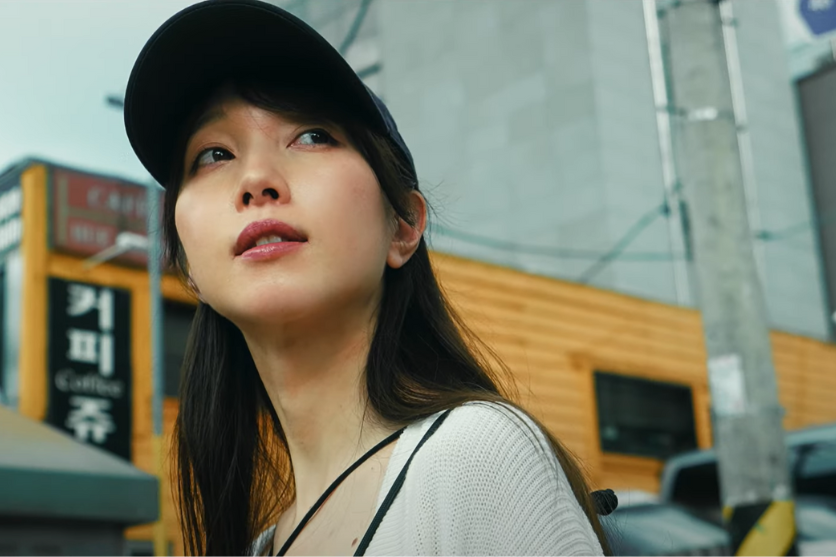
Beginner’s Guide to Vlogging: How to Start & Which Lens to Use
Your complete starter guide to vlogging – with tips, gear advice, and lens recommendations.
These days, creating and sharing videos has never been easier – all you need is a smartphone and a story to tell. One of the most popular formats? Vlogging. But while phone cameras are great for getting started, using an interchangeable-lens camera can seriously level up your content. In this article, we’ll walk you through the basics of vlogging, share practical tips for shooting, and recommend the right gear – including lenses that’ll give your videos a truly professional touch.
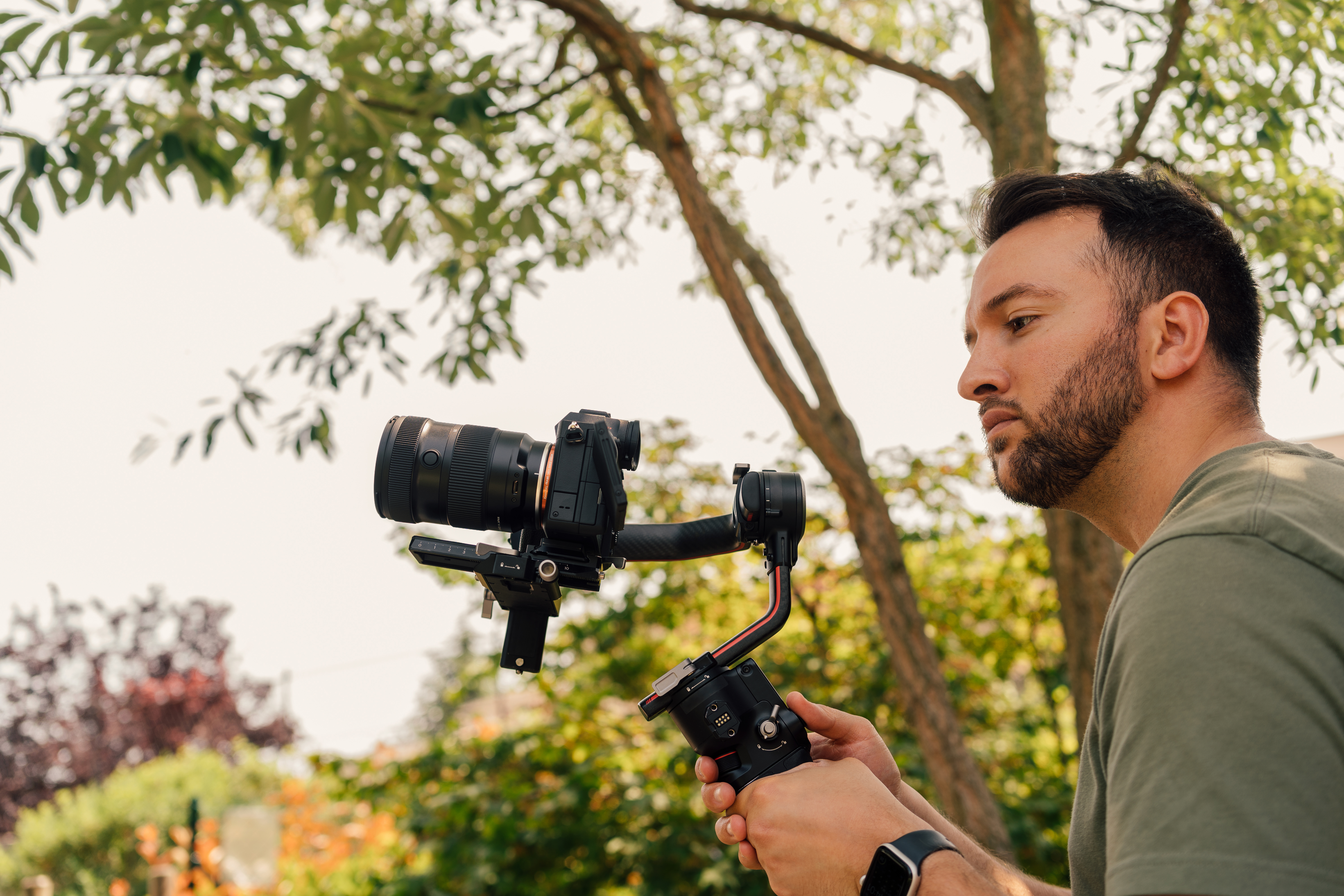
What Is Vlogging?
Vlogging, short for video blogging, refers to the creation of video content that captures and shares personal experiences—such as everyday life, hobbies, or travel—in a dynamic, visual format. Unlike traditional blogs, which primarily use text and photos, vlogs allow creators to connect with their audience on a deeper level through voice, facial expressions, and the ambient atmosphere.
The true strength of vlogging lies in its authenticity and emotional resonance. By combining visuals and audio, vloggers can communicate feelings and stories that go beyond words—making it a more intimate and relatable form of digital storytelling.
Platforms like YouTube, Instagram, and TikTok are the most common places to share vlogs. One of the reasons for its widespread popularity is accessibility: all you need to start vlogging is a smartphone.
Common Types of Vlogs and Their Key Characteristics
Vlogs come in a wide range of genres, with creators using various styles to express themselves and connect with their audience. From daily routines to travel adventures, each type of vlog has its own unique appeal. Below, we explore some of the most popular vlog formats and what makes each of them stand out.
Daily Vlog
A Daily Vlog offers a candid glimpse into everyday life—capturing moments from the morning routine to bedtime, or how a typical weekend is spent. It’s one of the most accessible vlog formats, as it doesn’t require elaborate setups or special events. This makes it an ideal starting point for beginners looking to create consistent content. By documenting simple, relatable moments—like getting ready, commuting, working, shopping, or cooking—daily vlogs create a sense of familiarity and intimacy. The charm of this genre lies in its authenticity. Viewers are drawn not to perfection, but to the vlogger’s personality and lifestyle. Being genuine and down-to-earth is what truly builds connection and trust in this format.
Travel Vlog
Travel Vlogs take viewers on a virtual journey by capturing the sights, sounds, and experiences of a destination. From famous landmarks and hidden gems to local food and cultural encounters, travel vlogs showcase the charm of a trip in a way that guidebooks or traditional travel shows often can’t. Through real-time footage and spontaneous discoveries, they offer a level of authenticity and immersion that makes viewers feel like they’re right there with you. Beyond entertaining and inspiring others, travel vlogs also serve as a personal travel diary. Rewatching them later allows you to relive those moments—turning your adventures into lasting memories.
Cooking Vlog
Cooking Vlogs bring food to life on screen—not only through visuals, but also through immersive sounds and emotions. Whether showcasing how to prepare a recipe at home or exploring dishes at a restaurant, these vlogs offer a sensory-rich experience. The sound of chopping vegetables, the sizzle of ingredients in a pan, or the satisfying crunch of that first bite all contribute to the appeal. A popular subgenre is ASMR cooking, which emphasizes cooking sounds and eating noises to heighten the sensory experience. Additionally, behind-the-scenes footage from gourmet restaurants or unique dining spots offers viewers an exclusive look, much like a travel vlog. Cooking vlogs are not just instructional—they’re experiential, turning food into visual storytelling.
Family Vlog
Family Vlogs are heartwarming content formats that document the everyday moments of family life—whether it’s daily routines, special occasions, or a child’s milestones. These vlogs often feel like a digital family album, allowing creators to share tips on parenting, fun activities, and family trips while capturing precious memories. The genre resonates deeply with viewers in similar life stages, creating a space for shared experiences and mutual inspiration. From discovering new ways to entertain kids to observing relatable parenting challenges, family vlogs offer both emotional connection and practical insights.
Cinematic Vlog
Cinematic Vlogs elevate everyday moments into visually stunning experiences. Combining artistic filming techniques like slow motion, time-lapse, drone footage, and expert color grading, these vlogs focus on aesthetic storytelling. They transform ordinary scenes—like walking through a city or making coffee—into cinematic narratives with emotional depth and visual flair. With carefully curated soundtracks and meticulous editing, cinematic vlogs are less about documentation and more about creative expression. They’re perfect for creators who want to showcase their filmmaking skills and build a unique visual identity through mood, tone, and atmosphere.
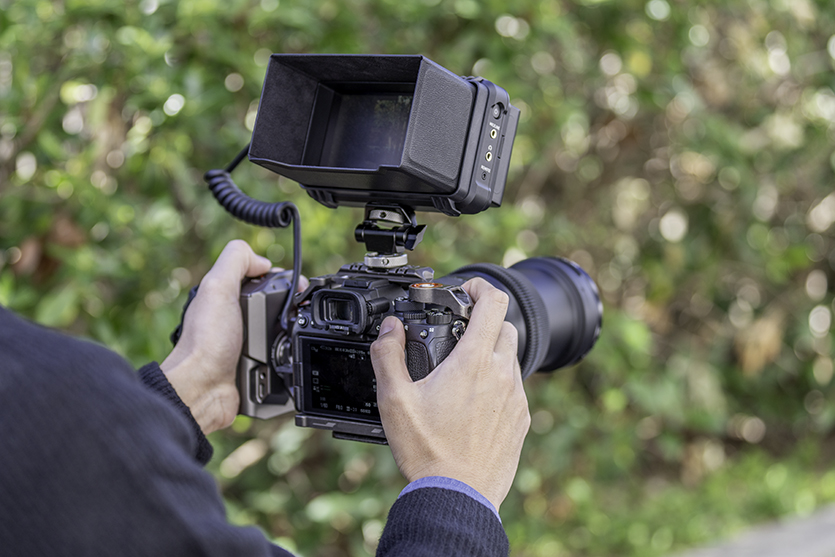
How to Start Vlogging with an Interchangeable-Lens Camera
One of the great things about vlogging is how easy it is to get started—often, all you need is a smartphone. However, if you’re looking to take your content to the next level, using an interchangeable-lens camera can significantly enhance the quality of your videos. Below are some key tips to consider when making the switch to more professional equipment.
1) Prepare Your Vlogging Gear
The equipment used for vlogging can be diverse and sometimes seem overwhelming, but there’s no need to invest in everything right away. It’s best to start with the basics—a reliable camera and a good microphone—and expand your setup gradually as your style and needs evolve. For example, if you’re filming a cooking vlog, a sturdy tripod that allows for stable, hands-free shooting will be essential. On the other hand, if you’re creating travel vlogs, a lightweight and portable camera will make it much easier to capture spontaneous moments on the go.
Camera
There are three main types of cameras commonly used for vlogging, each offering distinct advantages depending on your content style and shooting needs. The most convenient option for many is the smartphone. Modern smartphones are equipped with high-performance cameras capable of delivering impressive image quality. With dedicated mobile apps, editing is quick and accessible—making smartphones a great choice for beginners or anyone looking to keep their initial investment low.
For creators aiming for higher production quality, interchangeable-lens cameras are a popular step up. These allow for greater control over image aesthetics, including the use of different lenses and accessories. Whether you’re looking to achieve a cinematic look with shallow depth of field or shoot in low-light conditions, this type of camera opens the door to more professional, expressive video creation.
Lastly, action cameras like GoPro are highly favored for their compact size and durability. Ideal for outdoor adventures or dynamic footage, these cameras excel in capturing movement-heavy scenes. Many models are waterproof and built to withstand tough environments, making them perfect for travel vlogs, extreme sports, or rainy-day shooting where traditional gear might fall short.
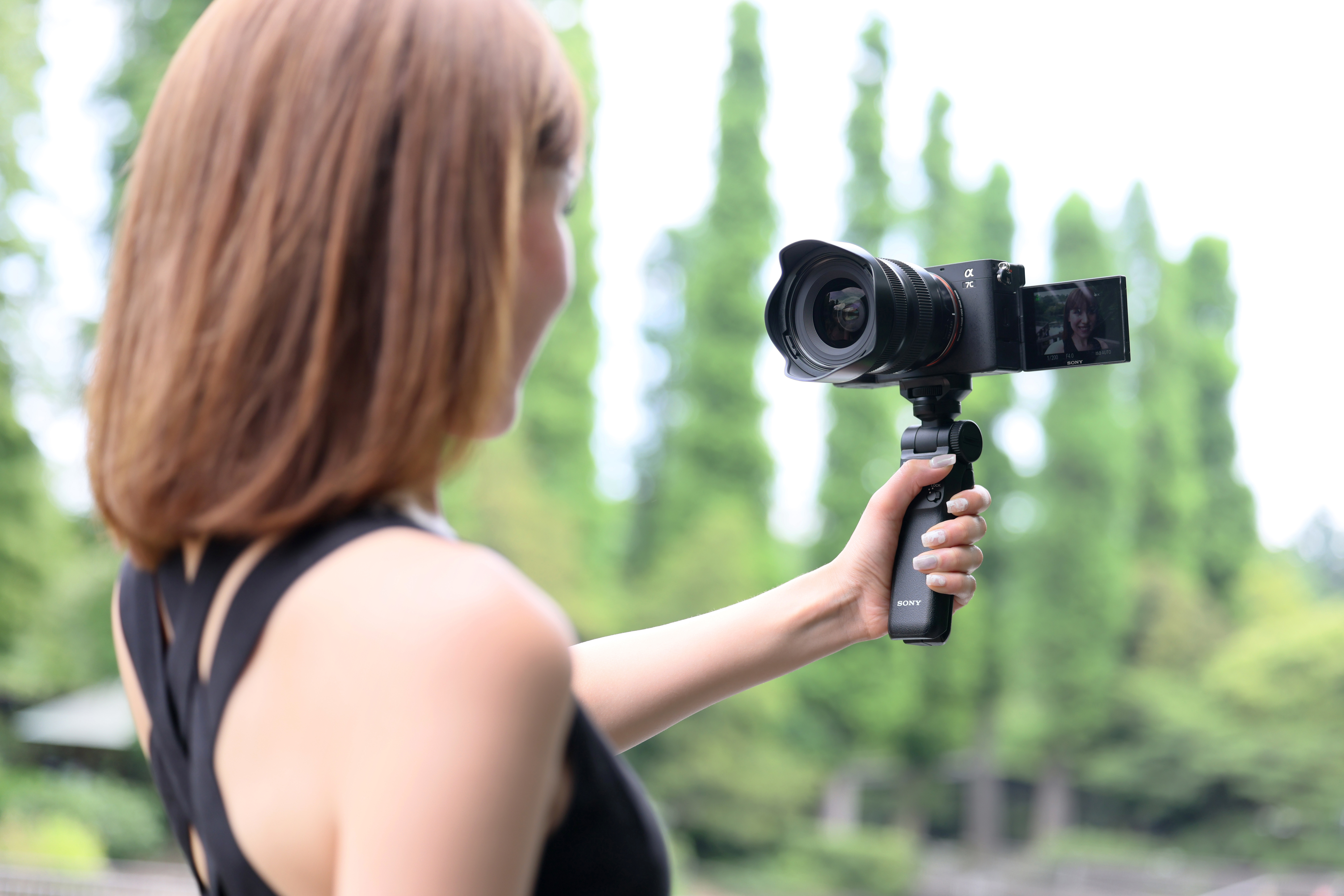
Microphone
Something beginners often overlook is the quality of the audio. Viewers are more sensitive to poor sound quality than image quality. An external microphone is effective in improving audio quality. Simply using an external microphone can significantly improve sound quality and make the video easier to watch. If you are more particular, you can use a lapel microphone, but it is best to start with a model that you can easily purchase. Also, directional microphones preferentially pick up sounds from a specific direction, reducing ambient noise and producing clearer audio.
Lens
When using an interchangeable-lens camera for vlogging, choosing the right lens is just as important as selecting the camera itself. The lens you use should match the style of your content and the type of scenes you want to capture.
A wide-angle lens (approximately 35mm or less in full-frame equivalent) is ideal for selfie-style vlogs and indoor shooting. It allows you to capture more of your surroundings, even in tight spaces, making it perfect for including both your face and the background in the frame—whether you’re filming at home or showcasing expansive landscapes during your travels.
A standard lens (around 50mm) offers a natural field of view that closely resembles human vision. It’s a versatile choice for capturing everyday scenes with a realistic and comfortable perspective. This makes it especially suitable for lifestyle vlogs or shooting people in a natural, flattering way.
For travel vloggers who want to pack light, an all-in-one zoom lens is a highly convenient option. These lenses cover a broad focal range—from wide-angle to telephoto—so you can shoot various scenes without constantly switching lenses. They’re perfect for capturing everything from sweeping views to close-up details. Additionally, choosing a lens with a wide maximum aperture (a small F-number) lets you shoot in low-light conditions and achieve beautiful background blur (bokeh), giving your videos a cinematic feel.
Tripod or Gimbal
To achieve smooth, stable video, the right accessories make all the difference. A tripod is a must-have for both selfie-style filming and fixed-position shots. For smartphone users, a lightweight mini tripod or a grip-style model is especially practical. These compact solutions are easy to carry and can be placed on a table for hands-free shooting—perfect for capturing yourself or scenic views effortlessly. If you’re filming while walking or moving, a gimbal is a game-changer. It stabilizes the camera and minimizes shake, helping you record fluid, cinematic footage even on the go. Gimbals are particularly valuable for travel vlogs and daily vlogs, where mobility is key and content often involves dynamic movement.
Light
If you’re aiming for a more professional look in your vlogs, incorporating the right lighting can make a significant difference. Even a simple setup can greatly enhance the visual quality of your videos. Compact LED lights are particularly useful in low-light environments. Depending on your needs, you can choose between models that mount directly onto the camera or those that can be placed on a stand—ideal for shooting indoors at night or in dimly lit settings.
For content that focuses on your face, such as beauty vlogs or tutorials, a ring light is especially effective. It provides even, flattering illumination, minimizes shadows, and highlights facial details clearly. It also creates a subtle “catch light” in the eyes, giving your expression a brighter, more vibrant look.
In addition to artificial lighting, natural light is an excellent and free resource. Filming near a window during the day allows you to bathe your subject in soft, diffused light, creating a cozy and emotionally rich atmosphere that’s perfect for intimate or lifestyle vlogs.
2) Start by Taking Photos Casually
While choosing the right equipment matters, the most important step is simply to keep creating. Start with a short video—around one minute—and go through the full process: filming, editing, and publishing. This hands-on approach helps you learn quickly and build confidence. Begin with a topic you’re passionate about or something you know well. When you’re interested in what you’re talking about, motivation comes naturally and the experience becomes more enjoyable. Plus, your knowledge will shine through on camera, making it easier to speak with confidence and connect with your audience.
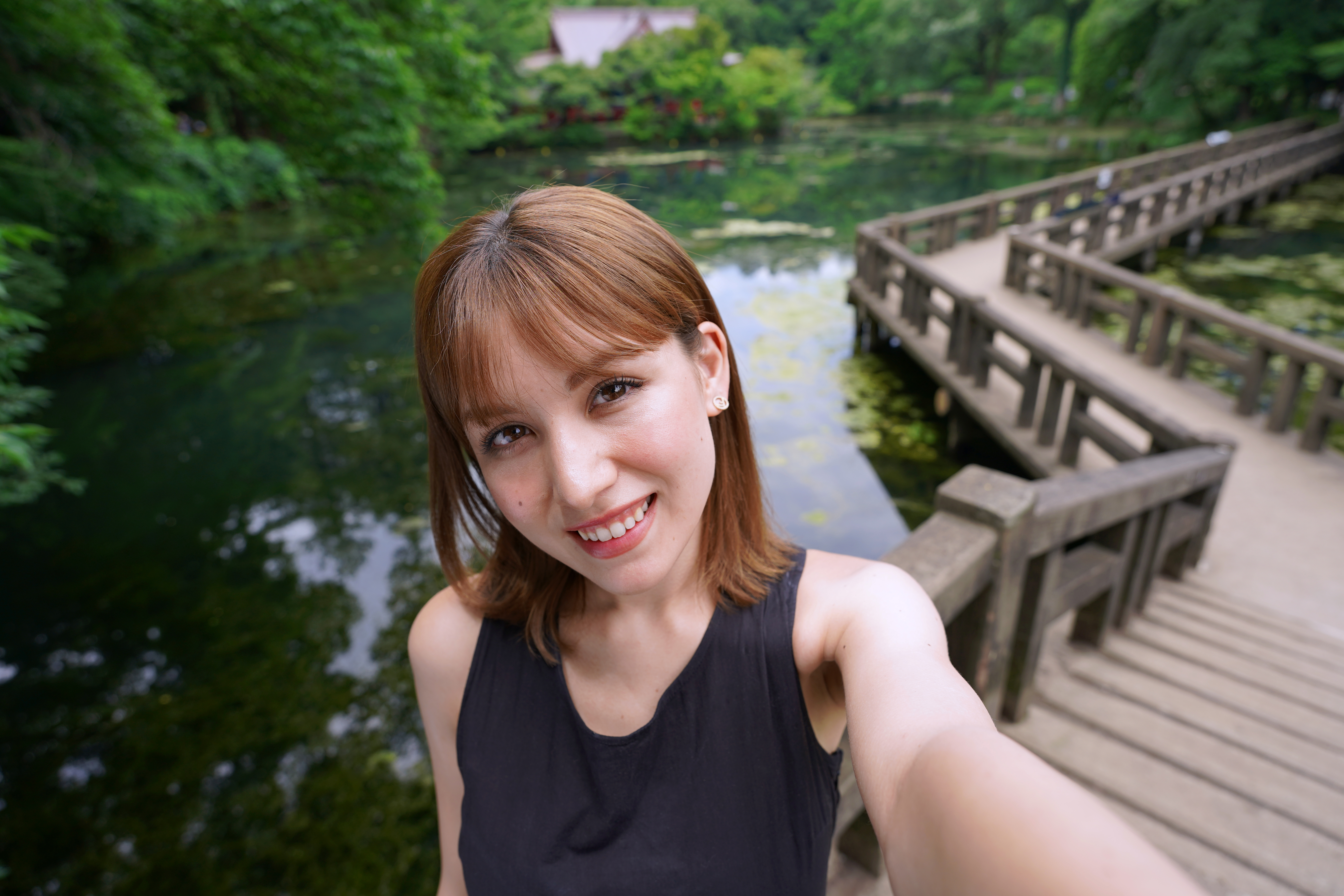
Tips for Shooting Stylish Vlogs
To create visually compelling and stylish vlogs, applying a few basic shooting techniques can make a big difference—even without a large production setup.
First, pay attention to composition. Using techniques like the rule of thirds helps your footage look more dynamic and professional. Instead of centering every shot, try framing your subject off-center or experimenting with negative space to create a more engaging visual flow.
Second, avoid visual monotony by incorporating variety in your shots. Mix in close-ups, wide angles, and different camera perspectives. Zooming in and out strategically or changing angles adds depth and keeps your viewers interested throughout the video.
Third, aim for a consistent visual atmosphere. Unifying your color tones helps build a distinct aesthetic and reinforces the mood or story you’re trying to tell. Whether you’re going for warm and cozy or crisp and cinematic, cohesive color grading makes your vlog feel polished.
For those using compatible Tamron lenses, software like TAMRON Lens Utility™ offers a powerful way to elevate your shooting. You can fine-tune lens settings, smoothly control focus transitions, and even customize button functions—making it easier than ever to achieve professional-quality results, even as a beginner.
3) Edit Your Vlog for Maximum Impact
Editing is the process of bringing your footage to life—combining video, audio, and storytelling into a polished final product. By trimming unnecessary clips, adding background music, subtitles, or transitions, you can make your vlog more engaging, easier to follow, and visually appealing. Good editing helps shape the flow and narrative of your content, making it more impactful and enjoyable for viewers. Even if you’re just starting out, learning a few basic editing techniques can go a long way. With today’s intuitive editing software, beginners can quickly create compelling videos that feel professional and tell a clear story.
4) Publish Your Vlog on Social Media
Once your video is complete, it’s time to share it with the world. Uploading your vlog to platforms like YouTube, Instagram, or TikTok allows you to reach a wide audience. However, each platform has its own style—so it’s important to understand their unique characteristics and tailor your content accordingly. For instance, YouTube is ideal for longer, more in-depth videos, while TikTok and Instagram Reels favor short, engaging clips, typically between 15 and 60 seconds.
To maximize visibility, pay attention to your title, thumbnail, video description, and hashtags. A strong thumbnail and a clear, catchy title can significantly increase your click-through rate. Take time to research current best practices and platform-specific strategies online to improve your chances of getting noticed.
If you’re planning to vlog regularly, engaging with your audience is just as important as posting content. Replying to comments, listening to feedback, and responding to viewer requests not only strengthens your connection with your audience, but also helps you grow as a creator. This two-way communication builds a loyal community around your content.
Things to Keep in Mind When Shooting and Publishing a Vlog
Creating vlogs can be fun and fulfilling, but it also comes with responsibility. To ensure your content is safe, respectful, and trouble-free, here are a few important points to keep in mind before filming and sharing your videos.
Respect Privacy
When filming family members, friends, or other individuals, always obtain their permission in advance. If someone prefers not to be shown on camera, respect their wishes by adjusting your framing or using blur effects during editing. It’s also crucial to avoid unintentionally revealing your home address or other sensitive personal information—this includes views from your window, mail, nameplates, or street signs. Always double-check your footage before publishing to ensure nothing private is visible. Be especially cautious when filming children. Never reveal safety-related details such as school names or extracurricular activities. Think long-term: your child may not want this content to be public in the future, so it’s important to consider their privacy and dignity before sharing.
Avoid Copyright Infringement
To protect your vlog—and yourself—always use royalty-free music and sound effects. Platforms like the YouTube Audio Library offer a wide range of free tracks that are safe for commercial and personal use. Avoid including copyrighted material such as TV shows, music, or videos in your footage. Even background music playing in public places like cafés may be protected and could trigger copyright claims. If this happens, mute the audio or replace it with licensed music during editing.
Check Filming Permissions
Just because you’re in a public space doesn’t mean filming is always allowed. Many tourist spots, stores, or commercial facilities have specific rules regarding photography. Always check local guidelines and get permission if needed—especially when using professional equipment like tripods, lighting setups, or drones. Also, keep in mind that rules vary by country and region. What’s acceptable in one place might be prohibited in another. Before traveling abroad to film, research local laws, cultural etiquette, and any filming restrictions to avoid misunderstandings or legal issues.
How to Choose the Right Lenses for Vlogging
When selecting a lens for vlog shooting, there are a few important factors to consider:
Maximum Aperture
Lenses with smaller maximum apertures, like F2.8 or F4, are advantageous because they allow more light to enter the camera. This makes it easier to capture bright, clear images in low-light environments. Additionally, lenses with a wide aperture often produce a beautiful background bokeh effect, which creates a soft blur that helps the subject stand out. This is one of the reasons why using interchangeable lens cameras can produce a more professional look, as it emphasizes the subject while gently blurring the background.
Focal Length and Angle of View
The focal length of a lens influences the angle of view and the perspective of your shots. Different vlogs may require different focal lengths depending on the desired shot composition:
Wide-Angle Lenses: These are ideal for capturing shots in smaller spaces (such as a room or studio), where you want to include the background and give your viewers a sense of place. They’re also great for landscape shots, where you want to capture a broad view.
Standard Lenses: These provide a more natural perspective and are perfect for shooting everyday scenes. They tend to offer a perspective that feels true to life, making them a go-to choice for capturing casual, unembellished moments in your vlogs.
To choose the best lens for your vlogs, consider the type of shots you want to create and experiment with lenses in stores or by reviewing sample shots online. This way, you’ll find the focal length and angle of view that suits your vlogging style.
Look
When choosing a lens for vlogging, it’s important to consider the “look” of the lens. Even lenses with similar technical specifications can produce different visual outcomes. The “look” refers to the overall aesthetic of the image, such as whether it has a sharp or warm impression. This is a key characteristic of the lens’s individuality. Some lenses may give a more dramatic, contrasty look, while others might provide a softer, more nostalgic feel. To fully understand how a lens impacts the image, it’s crucial to review sample images or test it out firsthand. Additionally, using lenses from the same manufacturer can help maintain a consistent look across your vlogs.
Weight and Compactness
For vlogging, especially during long shooting sessions or handheld filming, choosing a lightweight and compact lens can make a huge difference in comfort. Lighter lenses reduce fatigue, which is particularly important if you’re traveling or filming while on the move. If minimizing luggage is a priority, consider an all-in-one zoom lens, which covers a wide range of focal lengths, from wide-angle to telephoto. This versatility makes it convenient for various scenes without the need to swap lenses constantly.
Focus Breathing
Focus breathing is a phenomenon where the angle of view shifts slightly as the focus changes. While it’s not as noticeable in still photography, it can be quite disruptive when shooting video. It can cause the frame to appear as though it’s zooming in or out unintentionally. Before purchasing a lens, review sample footage or read user reviews to determine how noticeable the focus breathing is on the lens you’re considering.
Optical Axis Misalignment and Focus Shift When Zooming
When using a zoom lens for video, two things to be cautious of are optical axis misalignment and focus shift. Optical axis misalignment occurs when the optical axis of the lens shifts as you zoom, which can result in inconsistent composition when switching between wide and telephoto focal lengths. Focus shift happens when the focus position changes as you adjust the zoom, often making the image go out of focus when zooming in or out. This can be problematic during video shooting, so it’s worth checking sample footage and reviews to understand how well the zoom lens handles these issues.
Operability of Focus Ring
Smooth and precise focus control is essential when shooting video. A focus ring that offers just the right amount of resistance allows for fine adjustments, making it easier to create smooth focus transitions. Additionally, check how easily you can switch between autofocus (AF) and manual focus (MF). Smooth operation is key for seamless video shooting, especially in dynamic environments where you might need to adjust focus quickly.
Moisture-Resistant Construction
Since vlogging often takes place outdoors, lenses with moisture-resistant construction are beneficial for protecting your gear in unpredictable weather conditions. If you’re filming nature, travel, or outdoor vlogs, choosing a lens with this feature ensures you can keep shooting even in light rain or humid environments without worrying about damaging your equipment.
Autofocus (AF) Performance
When it comes to autofocus (AF), you want a lens that can quickly and quietly lock onto your subject, especially when vlogging with moving subjects. Additionally, consider the lens’s tracking ability; some lenses are better at following a subject as they move within the frame. If you’re recording with a camera’s built-in microphone, opt for a lens with a quiet AF motor to prevent the sound of the autofocus mechanism from being picked up in your audio.
Vibration Compensation
Vibration compensation (also known as image stabilization) is another essential feature for vlogging. Since vloggers often shoot without a tripod or gimbal, choosing a lens with built-in stabilization helps produce smoother, more stable footage. This is particularly important when shooting handheld or while moving around, as the lens will counteract any small shakes or vibrations from your hands or body.
Trying Out Full-Scale Vlog Shooting with an Interchangeable-Lens Camera
While smartphones are commonly used for vlogging, switching to an interchangeable-lens camera offers greater creative freedom and superior image quality. If you’re serious about producing high-quality content, using a dedicated camera can elevate your vlogs. If you’re new to vlogging, start by casually shooting to get a feel for the process, including filming and editing. Once you’re comfortable, you can experiment with more advanced gear and techniques.
By considering these factors when selecting a lens, you’ll be able to choose the right equipment for your vlogging style and needs, ensuring high-quality, engaging content.

TAMRON Lens Utility™
The TAMRON Lens Utility™ is software that lets you customize lens functions and update firmware for TAMRON lenses with a USB Type-C Connector Port – via computer or Android smartphone. By personalizing the settings to your shooting style, you can make photography even more enjoyable.
TAMRON products mentioned in this article
20-40mm F/2.8 Di III VXD
Model A062
17-50mm F/4 Di III VXD
Model A068
70-180mm F/2.8 Di III VC VXD G2
Model A065
35-150mm F/2-2.8 Di III VXD
Model A058
28-75mm F/2.8 Di III VXD G2
Model A063